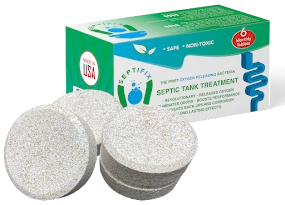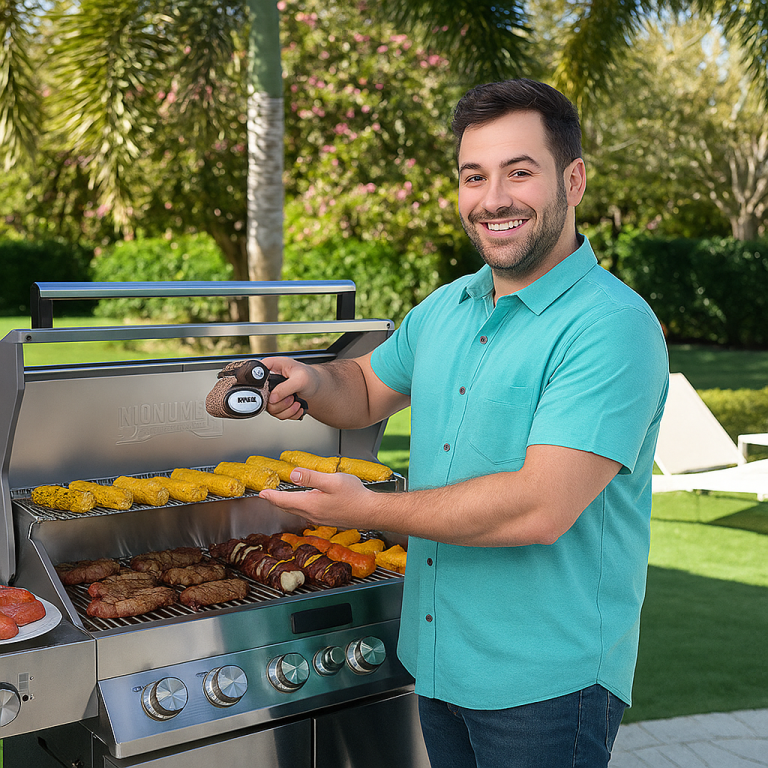Is Your Septic Tank Trying To Tell You Something?
The Best Septic Tank Treatments of 2025
For homeowners with a septic system, the old adage “out of sight, out of mind” can be a recipe for disaster. Neglecting your septic tank can lead to slow drains, foul odors, and catastrophic sewage backups costing thousands to repair.
While pumping your tank is essential, proactive monthly maintenance is the key to preventing problems before they start. The Crew researched the most popular septic tank treatments to find the most effective, reliable, and brilliantly useful solution for maintaining a healthy system.
Understanding Your Septic Tank: A Delicate Ecosystem
Before choosing a treatment, it’s crucial to understand what’s happening inside your tank. A septic tank isn’t just a holding container; it’s a living ecosystem that relies on a massive colony of bacteria to function. These beneficial bacteria break down the organic solid waste that enters the tank.
When this ecosystem is healthy, solid waste is digested, leaving behind wastewater that flows safely into your drain field. However, modern life can be tough on this bacterial colony. Household cleaning products, bleach, antibacterial soaps, and even some medications can kill off these essential bacteria. When this happens, the breakdown process slows down dramatically.
Solid waste accumulates at the bottom as “sludge,” while fats, oils, and grease form a “scum” layer at the top. If these layers become too thick, they can clog the pipes leading to your drain field. This is the point of system failure, leading to foul odors, slow drains, and eventually, a sewage backup into your home… a messy and expensive disaster.
- Slow Drains: If sinks, showers, and toilets throughout your home are draining slower than usual, it could indicate a clog or a full tank.
- Foul Odors: Noticeable sewage or “rotten egg” smells inside or outside your home, particularly around the drain field, are a clear sign of a problem.
- Gurgling Sounds: Unusual gurgling noises from your pipes are often a precursor to a backup.
- Pooling Water: Unexplained damp spots or standing water in your yard near the septic tank or drain field signals that the system is saturated and failing.
- Unusually Green Grass: A patch of grass over your drain field that is suddenly much greener and lusher than the rest of your lawn often means wastewater is leaking to the surface.
Why Septic Systems Fail
A septic tank isn’t just a holding container; it’s a delicate ecosystem. It relies on a healthy population of bacteria to break down organic solid waste. When this balance is disrupted, problems begin. Solid waste builds up as sludge at the bottom of the tank, and grease forms a scum layer at the top. If this buildup becomes too thick, it can clog the pipes leading to your drain field, causing system-wide failure.
Common household cleaning products, like bleach and harsh chemical drain cleaners, can kill the beneficial bacteria in your tank, accelerating this process. This is why simply pumping the tank every few years is a reactive, not proactive, solution.
A Proactive Solution for Septic Health
After researching various maintenance methods, the Crew found that using a high-quality septic tank treatment is one of the most effective ways to maintain the bacterial balance and prevent sludge buildup. We investigated several options and found a clear winner in terms of ease of use and effectiveness.
After our research, the Crew recommends Septifix as the best septic tank treatment for most homeowners. Its unique oxygen-releasing formula provides a more robust environment for bacteria to thrive, leading to more effective breakdown of solid waste. In our view it offers the best combination of performance, ease of use, and long-term value for protecting your septic system.
How We Ranked Our Top 5
To find the best septic tank treatment, the Crew evaluated popular products based on four core criteria:
- Effectiveness: We analyzed the scientific claims of each formula, focusing on the types of bacteria and enzymes used and their intended purpose (e.g., breaking down solids, grease, or paper). We gave higher marks to formulas that addressed all types of waste.
- Ease of Use: A monthly treatment is only effective if it’s easy to remember and apply. We prioritized products that were simple, mess-free, and required minimal effort from the homeowner. Flushable tablets and pods ranked highest.
- Safety: We assessed whether the products were safe for all types of pipes and septic systems and whether they contained harsh chemicals that could disrupt the tank’s long-term health. Natural, bacteria-based formulas were preferred.
- Value: We compared the cost per treatment against the product’s formulation and performance claims to determine the best overall value for proactive maintenance.
|
4.6
|
4.3
|
4.1
|
3.8
|
3.5
|
|
Check Today's Offers
|
$12.24
|
$19.99
|
$19.99
|
$49.95
|
The Competition
While Septifix was our top pick, here’s how the other treatments we analyzed stacked up.
#2: RID-X
RID-X is one of the most well-known brands on the market. Its formula is rich in cellulase, an enzyme specifically designed to break down toilet paper and other paper products. It is a reliable, widely available option for general maintenance.
However, its formula is less focused on breaking down the heavy grease and solid waste that form the thickest sludge layers. We found it to be a good product, but less comprehensive than the top pick.
#3: Green Gobbler
Green Gobbler comes in easy-to-use pods and contains a good blend of bacteria that digest grease, fats, and paper. It’s a solid all-around treatment that is effective for monthly maintenance.
The primary drawback is that its bacterial strains are standard anaerobic types. We found the oxygen-releasing formula of Septifix provides a more powerful environment for waste digestion.
#4: Cabin Obsession
This treatment is specifically formulated for less frequently used systems, like those in cabins, cottages, and RVs. It contains a potent blend of bacteria designed to work quickly in systems that see intermittent use.
While excellent for its intended purpose, it’s not formulated for the continuous, heavy use of a primary residence. For a standard home septic system, it’s not the optimal choice.
#5: Bio-Tab
Bio-Tab is another tablet-based product that is incredibly easy to use. Again, just flush one down the toilet. Its enzyme-based formula is effective for general maintenance and seems to do an OK job of helping to keep the system flowing smoothly.
While very convenient, its formulation is more basic than our top pick. It does a good job of maintaining an already healthy system but lacks the oxygen-releasing component of Septifix, which provides a more powerful boost for breaking down heavy sludge.
After our research, the Crew recommends Septifix as the best septic tank treatment for most homeowners. Its unique oxygen-releasing formula provides a more robust environment for bacteria to thrive, leading to more effective breakdown of solid waste. In our view it offers the best combination of performance, ease of use, and long-term value for protecting your septic system.
The Final Verdict
A septic system failure is a homeowner’s nightmare. It’s messy, expensive, and entirely preventable. While you should still have your tank inspected by a professional periodically, proactive monthly maintenance is the key to long-term septic health. Septifix offers a simple, cost-effective, and brilliantly useful way to care for your system, protect your property, and avoid catastrophic repair bills down the road. It’s the smartest all-round choice for any homeowner with a septic tank.







